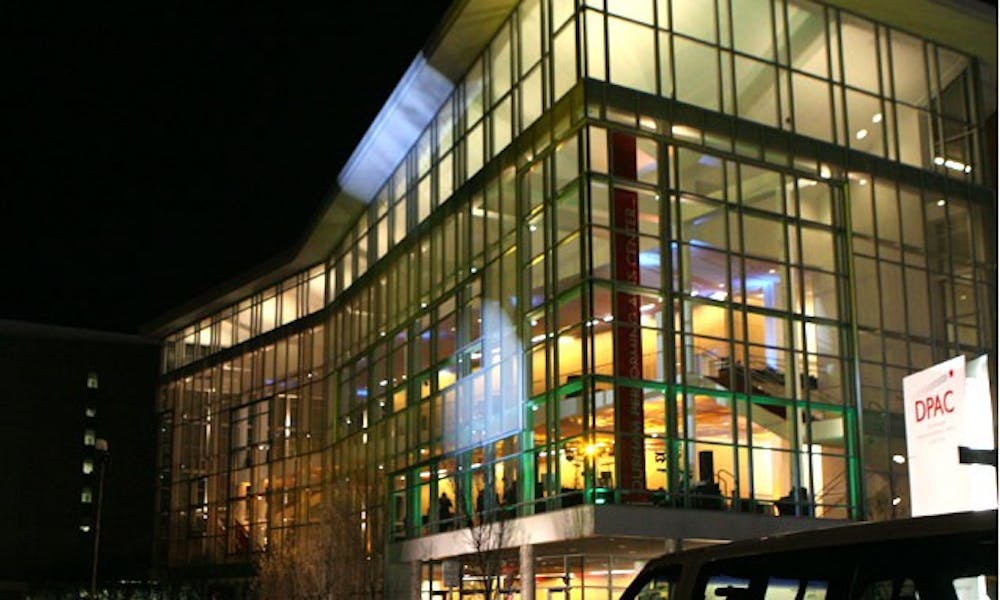Less than a year after the debut of the Durham Performing Arts Center downtown, both the city and the University are benefiting from their investments in the new facility.
According to a draft financial statement of the center’s first eight months of operation, DPAC earned a net total of more than $1 million in that time. In accordance with an agreement with the City of Durham, which owns the center, 40 percent of the income— $401,706—will go to the city. This number more than quadruples the city’s projected earnings from the center for its first full year, according to a Nov. 5 news release.
“The best thing is the way we were able to do that,” Mayor Bill Bell said. “Persons were very interested in the performances, and that’s a statement in itself—revenues were much more than expected in terms of people participating.”
Bell attributed DPAC’s initial success to the welcoming atmosphere that show attendees found at the center.
“I think we had great performances, great shows and a great facility in terms of the way it looks, the way it feels and the employees that work there,” he said. “We’ve gotten rave reviews on the customer service they provide.”
The center, which opened in December 2008 and cost $46.8 million to build, sold out more than 20 shows in its inaugural season.
Bell said he was pleased with the center’s success and what it means for the city.
“Any time you are able to have revenues exceed expenses it’s a boost, but I think what’s more important is it’s a statement of Durham being a center for arts in the region,” he said. “While we focus on DPAC, we have other attractions to complement DPAC and attract people to downtown Durham—it’s just another jewel in the downtown area.”
Duke’s $7.5 million donation to the center’s construction has also yielded a worthy new stage for the American Dance Festival, Executive Vice President Tallman Trask said, adding that the new 2,800-seat venue is a vast improvement over Page Auditorium, which was previously used for ADF performances.
“It worked out very well,” he said. “And part of the money also is what makes [DPAC] nice—they were going to cut back on a lot of things that they didn’t end up having to cut back on [due to Duke’s contribution].”
DPAC has also partnered with Duke groups to offer students a cultural alternative to activities on campus. The Hub in the Bryan Center currently sells discounted tickets and season tickets to select DPAC shows. The tickets, subsidized by the Office of Student Activities and Facilities, are available for a wider range of shows than last year, when tickets were sold through Duke University Union, said DUU President Zach Perret, a junior.
Perret said DUU’s new relationship with DPAC involves trying to present University shows at the downtown center, adding that an attempt to do so for next Spring recently fell through. “They have the exact size [venue] we need and don’t have at Duke,” he said. “I can’t promise it will work out this year, but I’m confident it will work out in future years.”
Although Perret said he did not know student attendance numbers at the center, he has received extremely positive feedback from students who have attended shows at DPAC.
“When students do go there, I know they love it,” he said. “Those are the responses we got last year—they saw how cool a venue it was, how nice it was outside and how great it was inside. It’s a great thing for the University to have, a great programming venue nearby.”
Get The Chronicle straight to your inbox
Signup for our weekly newsletter. Cancel at any time.

